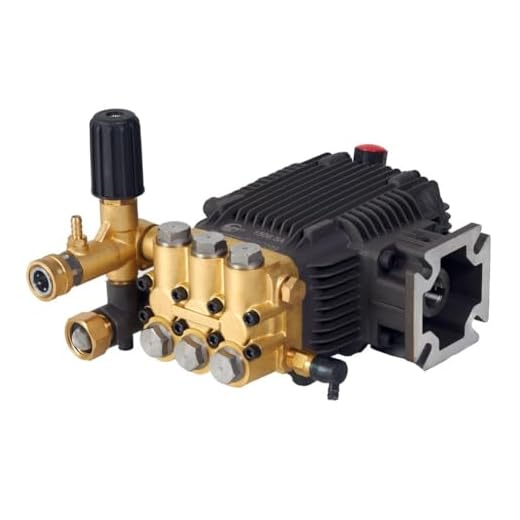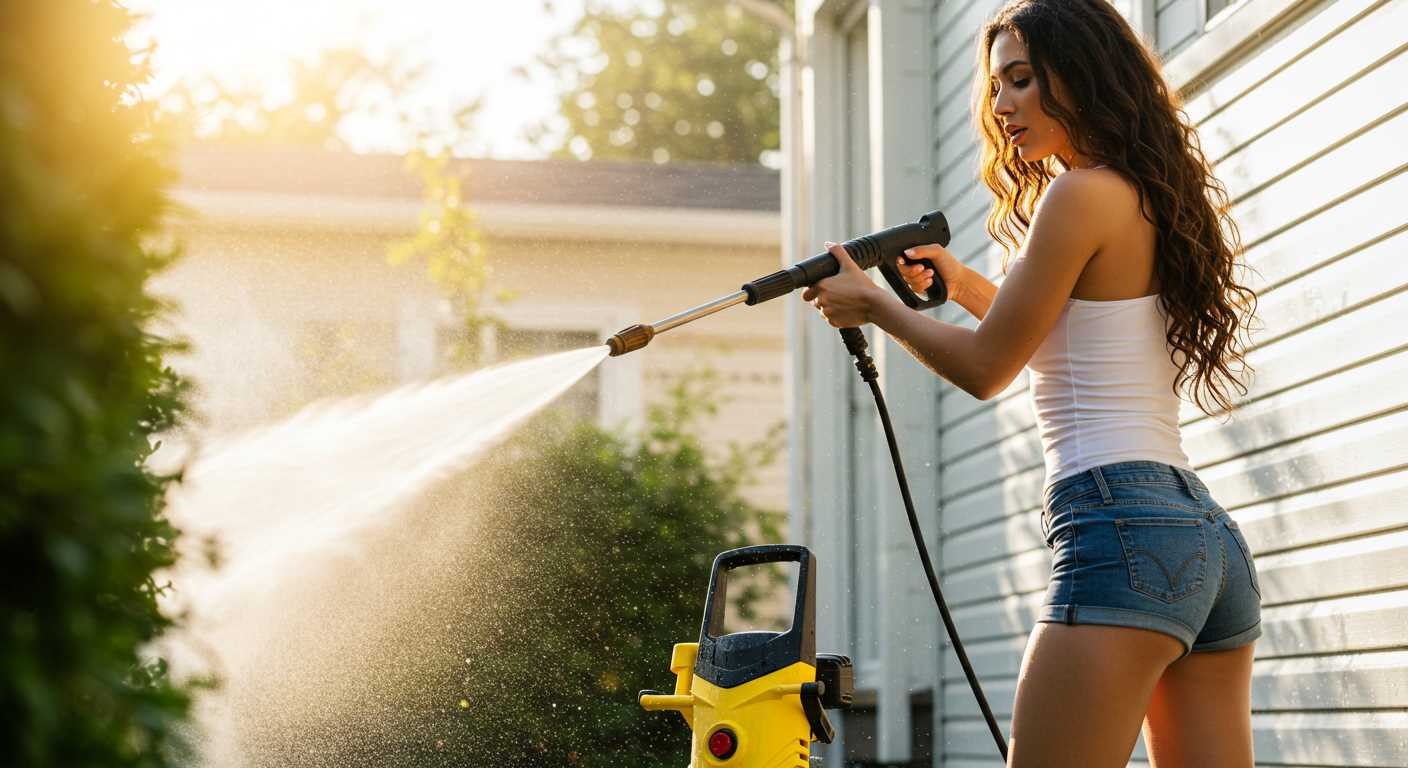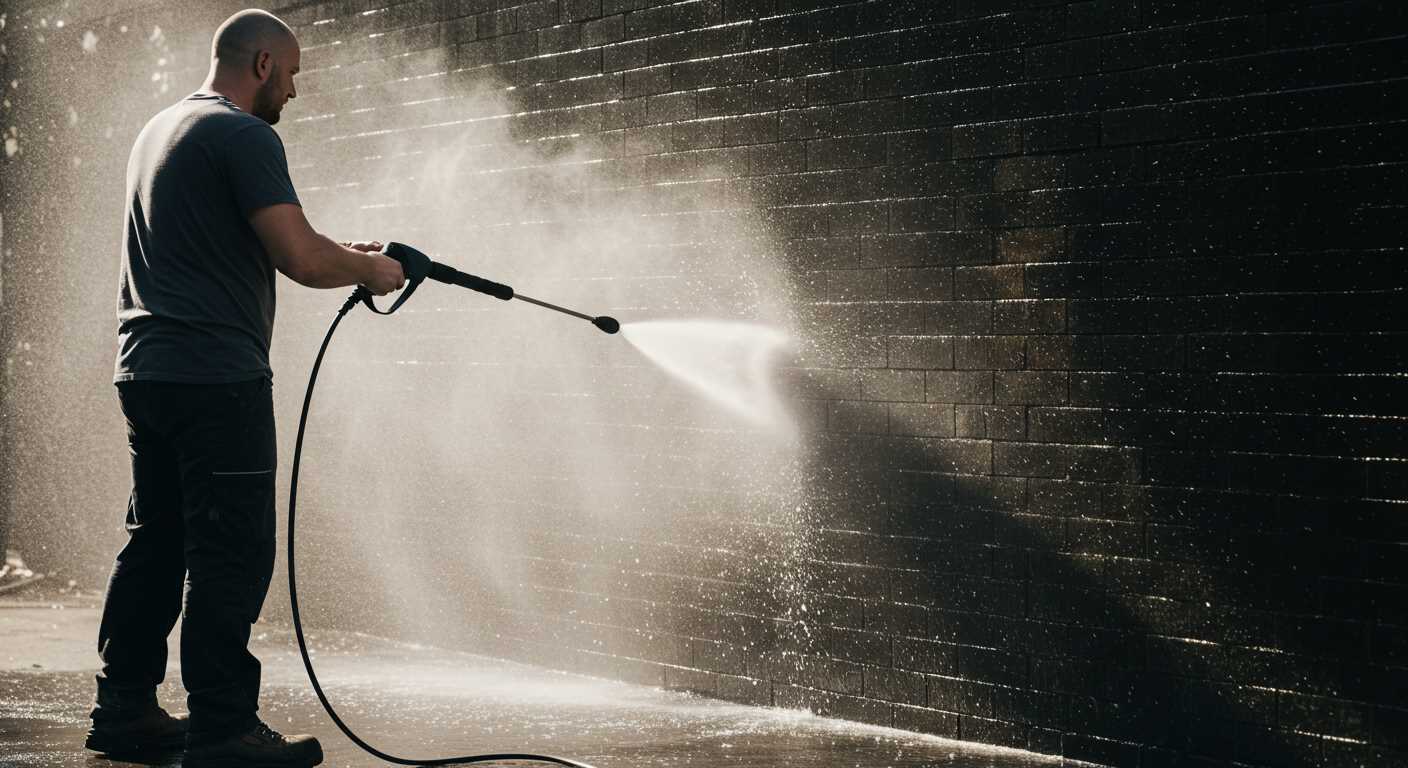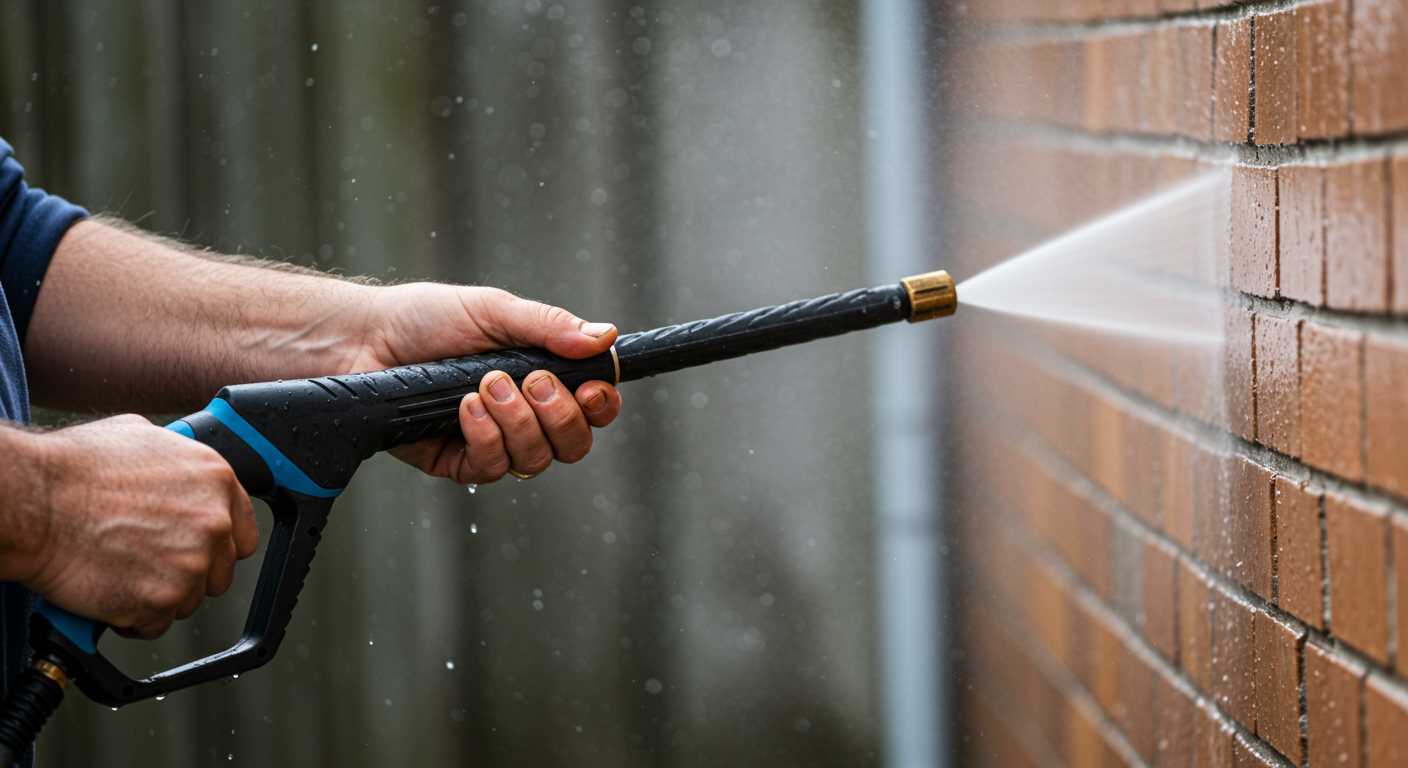



Prioritise power ratings; machines with higher PSI (pounds per square inch) deliver a more intense spray, ideal for stubborn grime. Seek models that offer adjustable pressure settings, allowing versatility for various cleaning tasks–from soft washing vehicles to blasting concrete surfaces.
Evaluate water flow rate, represented in GPM (gallons per minute). A higher GPM means quicker cleaning, as more water is used to rinse away dirt. Additionally, consider the construction quality, opting for durable materials that withstand wear and tear, as this impacts longevity and overall performance.
Pay attention to included accessories and features such as nozzle options and surface cleaners, which enhance efficiency. A good warranty can also reflect the manufacturer’s confidence in their product reliability; select machines backed by solid customer support.
Key Aspects to Consider in a Cleaning Machine
Prioritise the PSI (pounds per square inch) rating. A higher PSI provides greater cleaning power, essential for tough stains on driveways or patios. Machines with around 3000 PSI are typically suited for heavy-duty tasks, while 1500-2000 PSI units are adequate for lighter work like car detailing.
Examine the GPM (gallons per minute) measurement. This indicates the flow rate of water. A higher GPM enhances cleaning efficiency, allowing more surface area to be cleaned in a shorter time. A combination of high PSI and GPM yields optimized cleaning results.
Engine Type and Power Sources
Evaluate whether you prefer electric or gas-operated models. Electric units are quieter and typically lighter, making them more portable for small jobs. Gas machines, however, offer mobility and greater power, ideal for extensive areas without electrical access.
Check the nozzle options available. Different nozzles provide varied spray patterns. A 0-degree nozzle focuses pressure for stubborn spots, while a 25-degree nozzle covers broader surfaces. Consider models that include adjustable nozzles or rotary nozzles for versatility in cleaning tasks.
Build Quality and Accessories

Inspect the construction material. Durable components such as reinforced hoses and sturdy frames increase longevity and resistance to wear and tear. Additionally, evaluate the included accessories like surface cleaners, extension wands, and detergent tanks, which can enhance functionality.
Lastly, pay attention to the weight and mobility of the machine. Units that come with larger wheels, ergonomic handles, and lightweight designs offer better manoeuvrability during use, reducing fatigue over extended periods.
Understanding PSI and GPM Ratings
Focusing on PSI (pounds per square inch) and GPM (gallons per minute) is essential when evaluating cleaning machines. These figures indicate the unit’s cleaning power and efficiency.
PSI Explained

PSI measures the pressure at which water is expelled from the nozzle. Higher PSI ratings correspond to stronger streams that can remove stubborn dirt, grime, and stains. For light tasks like washing cars or patios, a range of 1300 to 1900 PSI suffices. Medium-duty tasks, such as cleaning driveways or outdoor furniture, typically demand 2000 to 2800 PSI. Heavy-duty jobs like stripping paint or deep-cleaning surfaces might require models boasting 3000 PSI or more.
Understanding GPM Ratings
GPM gauges the volume of water flowing from the machine. A higher GPM equates to a more effective clean, as it rinses away debris faster. For occasional washing, 1.5 to 2 GPM works well. If tackling larger areas or more challenging cleans, aim for units in the 2.5 to 4 GPM range. Balancing both PSI and GPM ratings is paramount; ideally, machines should have them proportionately aligned to enhance cleaning efficiency without wasting water.
Identifying Ideal Nozzle Types for Various Tasks
Choosing the right nozzle is crucial for each cleaning task. Each type offers unique spray patterns and pressures tailored to specific jobs, ensuring optimal results while preventing damage to surfaces.
Rotary Nozzle
Rotary nozzles, or turbo nozzles, combine the power of a direct jet with the span of a fan spray. Ideal for tough grime on concrete, driveways, and patios, they significantly reduce cleaning time. This nozzle type rotates a concentrated stream, making it effective for large, flat surfaces.
15-Degree Nozzle
The 15-degree nozzle provides a focused, high-pressure stream suitable for heavy-duty tasks such as paint stripping or removing stubborn stains. Use it on surfaces like metal and concrete but avoid delicate materials, as it might cause damage.
For general cleaning, the 25-degree nozzle is commonly used to wash vehicles and wooden decks. Its wide spray pattern ensures a thorough clean without risking surface integrity.
Utilising the 40-degree nozzle, a gentle option, is perfect for softer surfaces like windows and painted areas. This type reduces pressure while expanding the cleaning area, making it ideal for delicate cleaning tasks.
Understanding and selecting the appropriate nozzle will enhance your cleaning efficacy while protecting your surfaces from potential harm.
Exploring Electric vs. Gas-Powered Models
Choosing between electric and gas-operated units hinges on specific needs and intended applications. Here’s a breakdown of both options.
- Electric Units:
- Portability: Lightweight and compact, making them ideal for residential usage or small outdoor tasks.
- Noise Level: Operate quietly, suitable for neighbourhood use without causing disturbances.
- Maintenance: Require minimal upkeep; simply plugging in ensures readiness, without oil changes or complicated servicing.
- Power Output: Generally lower PSI and GPM compared to gas models, often sufficient for everyday cleaning activities like car washing, decks, and patios.
- Cost: More affordable upfront and energy-efficient, leading to lower operational costs in the long run.
- Gas Models:
- Performance: Higher PSI and GPM ratings, ideal for demanding tasks such as heavy-duty cleaning, stripping paint, or commercial uses.
- Mobility: Not limited by electrical outlets; can be used anywhere, which is advantageous for larger outdoor areas or remote locations.
- Durability: Generally built for longevity, suitable for extended use under tough conditions.
- Refuelling: Requires petrol, which can be a downside concerning storage and transport safety.
- Weight: Heavier and bulkier compared to electric equivalents, which may affect manoeuvrability.
In summary, if you require something light and easy for routine clean-ups, electric units serve as an excellent choice. However, gas machines are the way to go for demanding jobs, providing the power and versatility needed for extensive or professional applications.
Assessing Weight and Portability Considerations
Prioritise weight and portability when selecting a cleaning device, especially if frequent movement is expected. Lightweight models, typically under 30 pounds, offer ease of transport and handling. If you have a multi-storey home or need to traverse uneven terrain, consider options with wheels and ergonomic design. This will reduce strain while manoeuvring.
Transport Features to Evaluate
Evaluate their built-in features like handles and wheels. Models with large, sturdy wheels ensure stability on rough surfaces, while an extendable handle enhances mobility. Some designs even incorporate cord storage or dedicated nozzle compartments, making transportation hassle-free.
Suitability for Various Tasks
Certain tasks may require moving your device more frequently, so consider your intended use. If primarily working in a single area, a heavier unit with more power could suffice. However, if you’re tackling multiple cleaning sites, a compact and lightweight option will yield better results in terms of convenience and efficiency.
Examining Build Quality and Durability Factors

When assessing a cleaning device, prioritize materials and construction techniques. Sturdy casing, often crafted from high-grade plastics or metal, can significantly influence longevity. Models with reinforced frames withstand harsh conditions better than those made from flimsy materials.
Another aspect to scrutinize is the integrity of seals and fittings. Look for brands that use rubber or silicone seals, as these provide better resistance against leaks and wear. A well-sealed unit will outperform rivals with weaker components over time.
Electrical components should be housed in weather-resistant enclosures. A model with IP ratings–specifically IP65 or higher–indicates resistance to dust and water, ensuring reliable operation in various environments.
Regular maintenance parts such as hoses, nozzles, and fittings should be readily available. This aspect often reflects brand reliability. If replacements are scarce, the long-term usability of the machine is compromised.
| Material Type | Pros | Cons |
|---|---|---|
| High-Grade Plastic | Lightweight, durable, corrosion-resistant | Can be less sturdy than metal |
| Metal | Very durable, withstands heavy use | Heavier, can rust if not treated |
| Aluminium | Corrosion-resistant, lightweight | Less sturdy than steel |
Pay attention to warranty offerings; extended warranties often indicate confidence from the manufacturer in their products’ durability. Look for a minimum of two to three years on key components.
In conclusion, focus on robust materials, quality seals, water resistance, the availability of maintenance parts, and solid warranty support. This thorough evaluation can significantly enhance your experience and satisfaction with the cleaning appliance over its lifespan.
Reviewing Safety Controls and User Functions
Prioritise units equipped with an automatic shut-off mechanism. This feature prevents motor burnout when the trigger isn’t engaged, ensuring longevity and safety during use.
Pay attention to the presence of a thermal relief valve. This device releases built-up water pressure when the unit overheats, safeguarding both the user and the machine.
Ergonomic designs significantly enhance user experience. Grips should be comfortable and allow for extended use without causing fatigue. Look for models with adjustable handles for ease in manoeuvring.
Review the control layout; intuitive designs reduce operator strain and improve efficiency. Controls should be easily accessible, allowing for quick adjustments while working.
A prominent safety latch on the trigger prevents accidental activation. This is an invaluable addition, particularly in environments where unintentional starts could lead to injuries.
Consider models with high-visibility colours or markings. These configurations help ensure the unit stands out during use, making it less likely to be tripped over or accidentally obscured.
Lastly, always examine user reviews concerning the reliability of safety mechanisms. Real-world feedback can provide insight into how well these features function under regular conditions.
Checking for Accessories and Add-Ons Availability
Assessing the availability of accessories and add-ons can significantly enhance the versatility and usability of your next cleaning device. Items such as surface cleaners, extension wands, and various nozzles will extend the machine’s functionality beyond the basic spray option.
Common Accessories to Consider

- Surface Cleaners: Great for large areas, enabling quicker cleaning of driveways and patios.
- Turbo Nozzles: Provide an intense stream for removing stubborn dirt and grime.
- Extension Wands: Necessary for reaching high or distant areas, perfect for second-storey cleaning tasks.
- Soap Dispensers: Useful for applying cleaning agents easily without manual mixing.
Compatibility and Availability
Before making a purchase, verify that the add-ons are compatible with the selected model. Many brands offer specific accessories tailored for their units, while some universal options might fit across different designs. Check user reviews regarding compatibility and ease of use.
Many retailers offer bundled discounts on packages that include both the cleaning device and a selection of popular accessories. This can be an economical way to ensure you have everything needed for various tasks right away. Regularly check the manufacturer’s website for new releases and updates to accessory options, as many companies expand their lines based on customer feedback.








